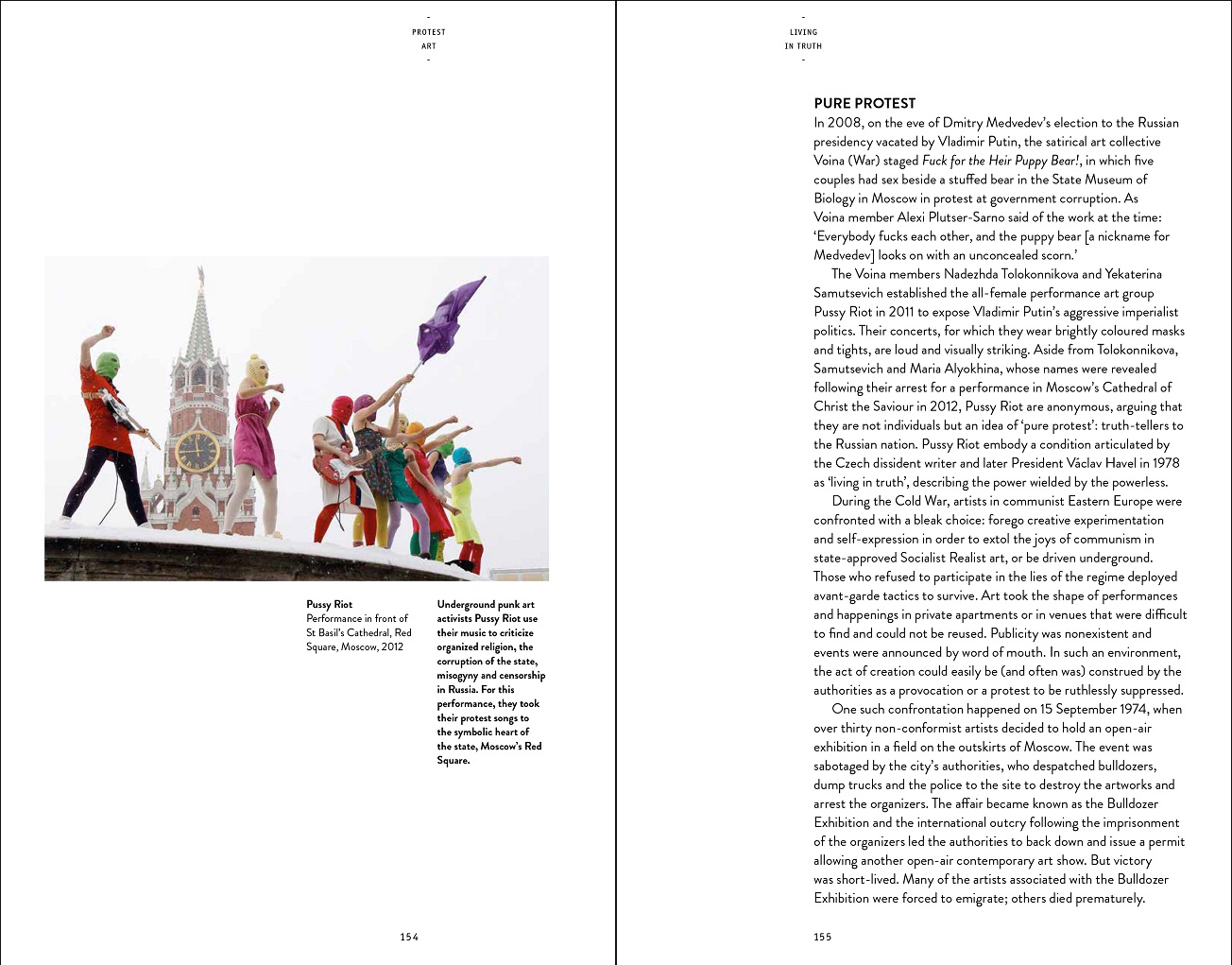A German officer visited Picasso in his studio in Paris during the Second World War and there he saw Guernica. What he viewed as a swirling mess of shapes provoked him into asking the artist “Did you do this?” to which he received the reply “No, you did this”.
 Sean Sheehan
Sean Sheehan
In 2003, when US secretary of state Colin Powell gave a speech at the United Nations, falsely arguing that Saddam Hussein was amassing weapons of mass destruction, his podium in the press area stood in front of a tapestry reproduction of Picasso’s painting. He called for it to be covered up so that it would not be seen while he set about justifying a war that would be as much an atrocity as the carpet bombing of the town of Guernica by Nazi German planes.
Protest art realises itself through historically determined content that comes to contingently define it. Different historical moments engender particulars that embody a field as a whole by their predominance: racism in Nazi Germany was anti-Semitic, in Israel it is anti-Palestinian.
 In the US, saying Black Lives Matter is not dissimilar to saying today that Palestinian Lives Matter – at the time of their utterance, such statements become the only valid assertion of the universal human right that all lives matter.
In the US, saying Black Lives Matter is not dissimilar to saying today that Palestinian Lives Matter – at the time of their utterance, such statements become the only valid assertion of the universal human right that all lives matter.
Jessica Lang in “Protest art” refers to Picasso’s work and to Palestine more than once in her lively guide to how artists respond to injustice.
She refers to Bansky’s description of the barrier in the occupied West Bank that separates parts of Palestinian territory from Israel as ‘the ultimate activity holiday destination for graffiti writers’ and his own contributions that include a stencil of children being hoisted skywards by balloons.
One of the illustrations in Lang’s book is a still from Forensic Architecture’s “Cloud studies”, a video of how ‘colonization invades the air’ in the form of cloud formations above Gaza caused by bombings, white phosphorus, tear gas and the use of aerial crop dusters to drop a toxic mix of herbicides along its eastern perimeter to destroy Palestinian crops and livelihoods. “Protest art”, part of an Art Essentials series from the publisher, is very much a book to look at; with 85 quality illustrations, the turning of every page reveals another example of art protesting.
 Whether it be performance, digital media, sculpture, poster, banner or painting, Lang provides necessary background information.
Whether it be performance, digital media, sculpture, poster, banner or painting, Lang provides necessary background information.
The photograph of Pussy Riot activists, for example, is accompanied by a page of text and Inji Effatoun, it is explained, painted Portrait of a prisoner when she was locked up by President Nasser’s regime in Egypt for her communist activities; one of the portraits of her fellow inmates, a guard was bribed to smuggle it out to her sister. Michael Raakowitz reconstructed artwork looted from the ancient palace of Nimrud in Assyria (Iraq) using food packaging and Arabic newspaper cuttings.
“Protest art”, by Jessica Lang, is published by Thames & Hudson.
(Photos supplied by the publisher)












.jpg)












